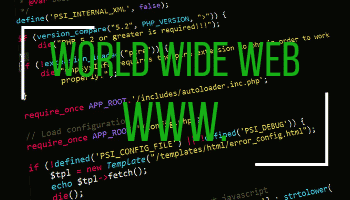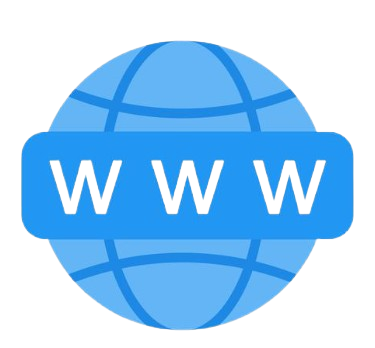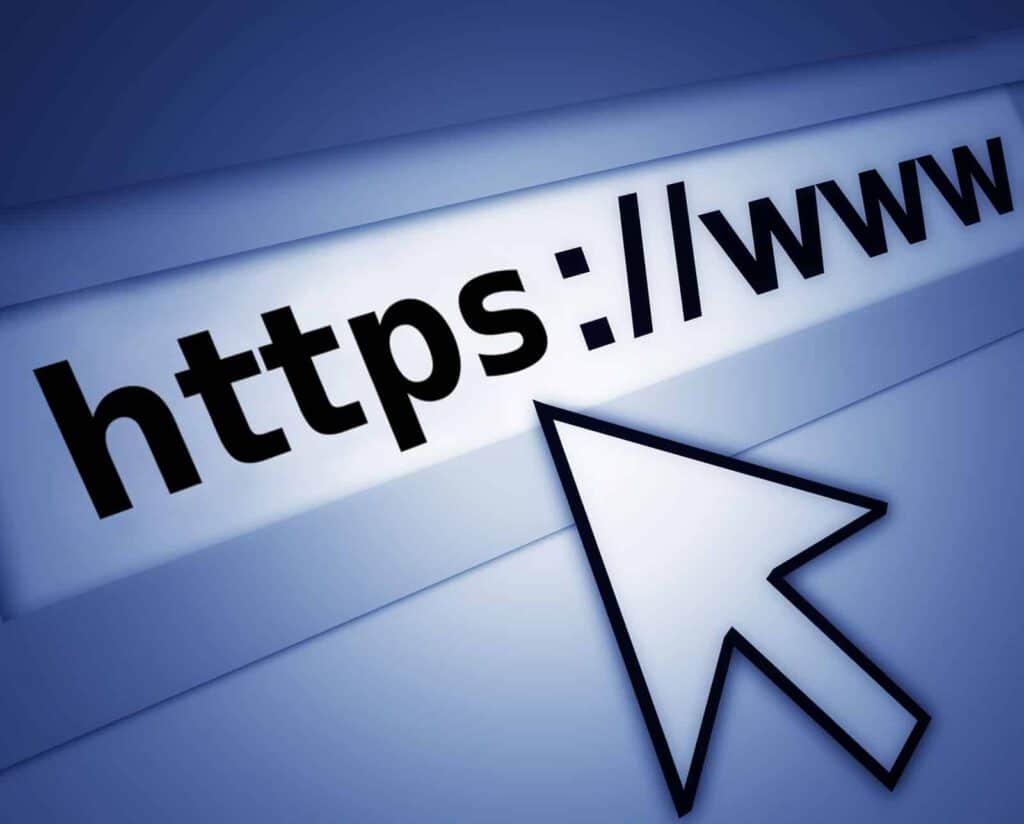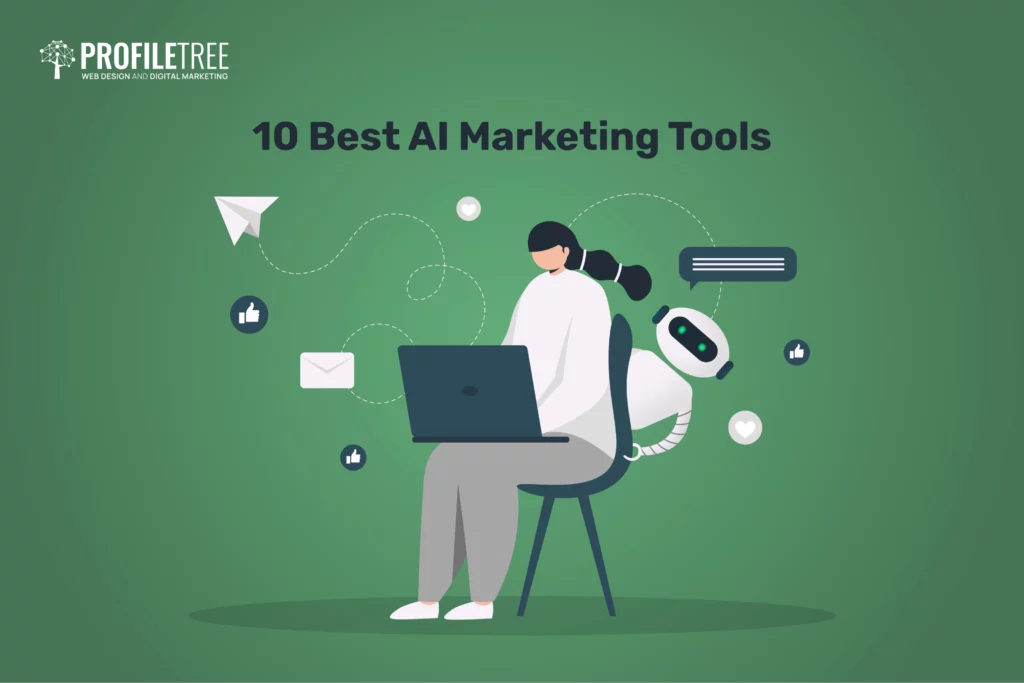At ProfileTree, we regularly update our articles to provide our readers with the most accurate and up-to-date information. This article has been updated as of 2023.
What is the World Wide Web? You might think the web and the internet are the same thing but, surprisingly, there are some crucial differences.
The World Wide Web is a collection of web pages from all over the world that use the internet. Meanwhile, the internet as we know it, is a collection of devices forming a network allowing anyone around the world to open web pages.
Let’s take a closer look…

Table of Contents
History of the World Wide Web
The World Wide Web was invented in 1989 by English inventor Tim Berners-Lee. At this stage, the internet and Hypertext were already invented. The reason he invented the World Wide Web? To make it easier for scientists to connect to one another for sharing data.

Before 1989 computers were connected together through the internet, but Tim realised he could exploit hypertext and could share information in this way. When Tim presented his web proposal it didn’t take off, being called ‘vague but exciting’ by his boss.
By 1990, Tim’s boss gave him time to develop the web, through writing and developing technologies that still appear on the web today. These developed languages were HTML, HTTP and URL/ web address. This gave Tim the opportunity to write the first web page/browser by the end of 1990. Then, 1991 became notable as the first year outsiders from Tim’s work were invited to the new web community.
By 1993, Tim and his company released that the code should be available to everyone around the world for free. Furthermore, in 2003 new web standards were released royalty-free for everyone around the world.
World Wide Web Meaning
The World Wide Web (often simply called the “Web”) is a system of interlinked hypertext documents and multimedia content that is accessed via the Internet. It allows users to view and navigate content through the use of web browsers.
Here’s a breakdown of the term:
World Wide: This indicates the global nature of the system. The Web is accessible from almost anywhere in the world where there’s an Internet connection.
Web: This term metaphorically describes the interconnected nature of the system, much like a spider’s web.
Key points about the World Wide Web:
- URLs and Browsers: The Web operates using URLs (Uniform Resource Locators) to identify specific pieces of content. Web browsers, like Chrome, Firefox, Safari, and Edge, are used to access and display this content.
- HTTP/HTTPS: The primary protocol for the Web is HTTP (Hypertext Transfer Protocol) or its secure version, HTTPS. This protocol defines how messages are formatted and transmitted, and how web browsers and servers should respond to various commands.
- HTML: Web pages are primarily written in HTML (Hypertext Markup Language), which is a standard for creating structured documents. This language allows for the embedding of images, videos, and other multimedia content.
In essence, the World Wide Web revolutionised the way people access and share information, playing a pivotal role in bringing about the information age we live in today.

The Web’s Metamorphosis: Key Shifts in the Past 5 Years
The past five years have witnessed a dramatic metamorphosis of the World Wide Web. From the ascendancy of mobile browsing to the proliferation of voice search, significant shifts have redefined how we navigate and interact with information online. Let’s explore some of the key transformations:
1. Mobile Takes the Throne: Smartphone penetration crossed 60% globally in 2023, solidifying mobile as the primary access point to the web. This has led to:
- Responsive design becoming the norm: Websites must adapt seamlessly to smaller screens and touch interfaces.
- App ecosystems booming: Native apps offer immersive experiences tailored for mobile devices, challenging traditional web properties.
- Micro-content taking center stage: Bite-sized content like short videos and social media posts cater to shorter attention spans.
2. App vs. Web: A Blurred Line: The once-distinct boundary between apps and web properties is fading. Progressive Web Apps (PWAs) offer app-like features within a web browser, while hybrid apps combine native and web elements. This has resulted in:
- Improved offline accessibility: PWAs cache content for offline use, bridging the gap with native apps.
- Push notifications and deeper engagement: Web users can now enjoy features previously exclusive to apps.
- SEO challenges for app content: App developers need to consider indexing and discoverability on search engines.
3. Voice Search Revolution: The rise of voice assistants like Siri and Alexa has fueled the need for voice search optimization. Websites must now:
- Use natural language and long-tail keywords: People speak differently than they type, requiring websites to anticipate conversational queries.
- Focus on semantic search: Understanding the intent behind a spoken query is crucial for providing relevant results.
- Optimize local search: Voice search often involves finding nearby businesses or services, so location optimization is essential.
4. JavaScript Frameworks Rule the Playground: Frameworks like React, Angular, and Vue.js have streamlined web development, accelerating the creation of interactive and dynamic web experiences. These frameworks have brought about:
- Faster development cycles: Reusable components and pre-built functionalities expedite development times.
- Improved user interfaces: These frameworks enable richer interactions and smoother animations.
- Talent pool consolidation: Developers are increasingly focusing on mastering popular frameworks, impacting hiring dynamics.
5. The Web Beyond Browsers: The web is expanding beyond traditional browsers, integrating into smart TVs, wearables, and smart home devices. This poses new challenges for:
- Accessibility across devices: Websites need to adapt to diverse screen sizes and interaction methods.
- Security and privacy considerations: Data privacy becomes even more critical as the web infiltrates our personal spaces.
- New content formats and technologies: Developers need to adapt to these emerging platforms and their unique capabilities.
These are just some of the key shifts shaping the web today. As technology continues to evolve, we can expect even more profound transformations in the years to come. Staying informed and adaptable will be crucial for both businesses and individuals to thrive in this dynamic landscape.
In addition to the above, consider highlighting:
- The rise of social media commerce: Platforms like Instagram and TikTok are turning into major shopping destinations, impacting e-commerce strategies.
- The growing importance of web accessibility: Ensuring websites are usable for everyone with disabilities is becoming a priority.
- The impact of artificial intelligence on content creation and search: AI-powered tools are changing how we write, optimize, and search for information online.
Differences Between the Internet and the World Wide Web

It’s important to note that the World Wide Web is not synonymous with the Internet. The Internet is a massive network of networks, a networking infrastructure, while the Web is a way to access information over the Internet through browsers.
The main difference between the Internet and the World Wide Web is the fact that the World Wide Web is just one part of the Internet. The World Wide Web plays a very important on the web as it shares all the information on the internet using HTML.
The internet is also used to share messages, emails, file transfers and newsgroups. The Internet does not need to use the web to perform these features of the Internet; another major difference between the Internet and the world wide web.
Benefits of the World Wide Web
There are many different great features of the World Wide Web. Many of them connect the whole world together in a way people would never have thought possible before the 1990s.
Connecting the World (Instant Communication)
Connecting Global Audiences
One of the biggest perks of the World Wide Web comes by way of the web connecting the whole world. Anyone from around the world can connect to any web page on the internet via the world wide web. People can connect to one another on different social media platforms such as Facebook and YouTube.
Finding Information Online
With hundreds of millions of web pages on the World Wide Web, you can find almost any information you need on the web. Many students – for example – will use the web to find information on their course, whereas others may use it to find out random information of benefit to their lives or business, etc.
Gaining Access from Anywhere in the World
Anyone from around the world can access the Word Wide Web. That means a person from Ireland can access the same web page as a person in the US or Africa as long as that person has the right equipment and access isn’t blocked in their specific country.
So, seeing the internet and the web as one and the same thing is an understandable error. We (hope!) we’ve now explained the difference.
Demystifying the Web: A Glossary of Key Terms
Navigating the online world can be confusing, especially when technical terms come flying around. Worry not, brave explorer! This glossary will equip you with the knowledge to confidently conquer the digital frontier.
Internet vs. Web:
- Internet: The global network of interconnected computers and networks that facilitates communication and data exchange. Imagine it as a vast network of highways.
- Web: A collection of interconnected websites and documents accessible through the internet. Think of it as the content flowing over those highways.
Surface Web vs. Deep Web:
- Surface Web: The part of the web accessible through traditional search engines like Google. It’s like the well-lit main streets of the internet.
- Deep Web: Content not indexed by search engines, requiring specific tools or access codes to reach. Think of it as hidden alleys and secret societies accessible only to those who know the way.
Other Key Terms:
- IP Address: A unique identifier assigned to every device connected to the internet. Think of it as your house address in the digital world.
- Domain Name: A human-readable name that translates into an IP address, making it easier to remember and access websites. Think of it as your house name or nickname.
- URL: Uniform Resource Locator, the complete address of a specific web page. It’s like the full street address leading to your digital destination.
- Protocol: A set of rules governing communication between devices on the internet. Think of it as the language spoken on the network highways.
- HTTP: Hypertext Transfer Protocol, the most common protocol used for communication on the surface web. Think of it as the main language for everyday browsing.
- HTTPS: Secure HTTP, a more secure version of HTTP that encrypts data for greater protection. Think of it as a secure communication channel for sensitive information.
- Browser: Software used to access and navigate the web. Chrome, Firefox, and Safari are popular examples. Think of it as your vehicle for exploring the digital landscape.
What Did People Use to Think of the World Wide Web?
The perception of the World Wide Web has evolved significantly since its inception. When it was first introduced to the public, reactions ranged from scepticism and confusion to excitement and optimism.
Here’s a look at some of the initial reactions and perceptions of the World Wide Web:
Scepticism
Many people were sceptical about the potential of the Web. Some believed it was just a passing fad or a tool only for academics and researchers. There were doubts about its commercial viability and its potential to become a mainstream communication tool.
Confusion
The concept of the Web was new and unfamiliar to many. The distinction between the Web, the Internet, and other online services was not clear to everyone. Terms like “browser,” “URL,” and “hyperlink” were new and took time for the general public to understand.
Excitement
Early adopters and tech enthusiasts were excited about the possibilities the Web offered. They saw it as a revolutionary platform for sharing information, connecting with others, and creating new opportunities.
Concerns about Security
As with any new technology, there were concerns about security. People were wary of sharing personal information online, and there were fears about potential hacking, viruses, and cyber threats.
Digital Divide Concerns
There were concerns that the Web would exacerbate the digital divide, with only the privileged having access while others were left behind, however as it grew, the WWW has become a lot more accessible to audiences across the globe.
Potential for Business
Entrepreneurs and businesses quickly recognized the potential of the Web for commerce. This led to the dot-com boom of the late 1990s, where startups with a “.com” in their name received significant investments, leading to a speculative bubble.
Social Implications
Some foresaw the social implications of the Web, predicting that it would change the way people interact, communicate, and form communities. There were both optimistic and pessimistic views about its impact on society.
Overwhelm and Information Overload
As the amount of information on the Web grew, some people felt overwhelmed by the sheer volume of content available. The challenge of finding relevant and trustworthy information became apparent, which is still an issue today.
Globalisation
The Web was recognized as a tool that could connect people globally, breaking down geographical barriers and fostering cross-cultural exchanges. As it became more accessible, people from all walks of life were able to connect instantly.
Over time, as the Web became more integrated into daily life, many of these initial perceptions changed. The scepticism gave way to acceptance, confusion turned into familiarity, and concerns about security led to the development of more robust online safety measures. Today, the Web is an integral part of our lives, and its influence on society, culture, and the economy is undeniable.
World Wide Web Day
World Wide Web Day is celebrated on August 1st every year. It marks the anniversary of the World Wide Web (WWW) being made publicly available to the world. It’s important to place significance on this day as the World Wide Web completely revolutionised how we work and live.
Gazing into the Web’s Future: Predictions & Insights from Tech Gurus
The next 5-10 years promise a web even more dramatically transformed than the past five. Let’s peek into the crystal ball with insights from leading technologists on what lies ahead:
1. Automation Revolution:
- Webflow co-founder Vlad Magdalin: “We’ll see an explosion of low-code and no-code tools, democratizing web development and unleashing a wave of citizen creators.”
- GitHub CEO Nat Friedman: “AI-powered coding assistants will write much of the code, freeing developers for higher-level strategic thinking.”
2. VR/AR Integration:
- Meta CEO Mark Zuckerberg: “The metaverse will not replace the web, but it will become a major layer woven into how we access information and interact online.”
- HTC Vive co-founder Jeri Ellsworth: “Expect a rise in spatial web experiences, where websites merge with augmented reality, blurring the lines between physical and digital spaces.”
3. Semantic Understanding:
- Google AI researcher Anima Anandkumar: “The web will move beyond keyword-based search to true semantic understanding, allowing us to query using natural language and intent.”
- Semantic Web expert Tim Berners-Lee: “Semantic web technologies will create a web of data with rich connections, enabling smarter search, personalized experiences, and better knowledge discovery.”
4. Ethical AI Moderation:
- AI researcher Kate Crawford: “We need robust ethical frameworks and human oversight to ensure AI content moderation doesn’t stifle free speech or perpetuate biases.”
- EFF Executive Director Cindy Cohn: “Decentralized and transparent moderation systems will be crucial to combat online harms and empower users to have a say in how content is governed.”
5. Beyond Screens:
- IoT expert Kevin Ashton: “Expect the web to seamlessly integrate with our physical environment, with connected devices responding to our voice or gestures, blurring the lines between online and offline.”
- Web inventor Tim Berners-Lee: “The web will evolve to be more inclusive, providing access to marginalized communities and ensuring everyone benefits from its potential.”
These are just glimpses into the possibilities lurking on the web’s horizon. As technologists innovate and ethical considerations guide development, the next decade promises a web that is more immersive, interactive, and accessible than ever before. Prepare to be surprised, challenged, and ultimately empowered by the web’s transformative journey!
Bonus Tip: To further enrich your article, consider researching specific projects or initiatives by these technologists that align with their predictions. This adds concrete examples and enhances the credibility of your insights.
FAQ:
Q: What are some ways to protect myself online?
A: Use strong passwords, be cautious about clicking links and downloading files, and be aware of online scams. Consider using security software and regularly update your devices and software.
Q: Can I access the deep web safely?
A: Exploring the deep web requires caution and specialized tools. Stick to reputable websites and be wary of accessing illegal or harmful content. Always prioritize your safety and privacy when venturing into the deep web.
Q: How can I learn more about specific internet technologies?
A: Online resources like Wikipedia, Khan Academy, and dedicated coding tutorials offer invaluable information. Online communities and forums can also connect you with tech enthusiasts and experts who can answer your questions.
Q: What will the future hold for the internet?
A: The internet is constantly evolving, with advancements in artificial intelligence, virtual reality, and blockchain technology shaping its future. Expect increased automation, immersive experiences, and a more decentralized web landscape.
Conclusion:
The internet, with its intricate web of connections and vast information, holds boundless potential for learning, connecting, and exploring. From understanding basic terms to delving into advanced technologies, the journey of navigating this digital world is both empowering and enlightening.
Remember, knowledge is power, so keep exploring, asking questions, and embracing the ever-changing landscape of the internet. The future is digital, and with the right tools and knowledge, you can be a confident citizen of this interconnected world.
See More
If you enjoyed this article, you might want to check out these other blogs about website design and management: What is a Static Website? | How to Make a Website? | What is a Website Title? | How Do I Block a Website on Chrome? | How to Find the Publisher of a Website? | How to Clear Cookies From Your Browser?
Our FREE ProfileTree knowledge archive… Internet Marketing Consultant | Online Advertising | Online Marketing Tips | Yoast Ultimate Guide | Understanding your target market | Online Leadership Courses
Unmissable QUICK READ What Is? guides… SEO Title | Black Hat SEO | Video Marketing | Keyword Research | Video Production | Online Advertising | Mobile Marketing | Content Marketing | UX Design | Content


